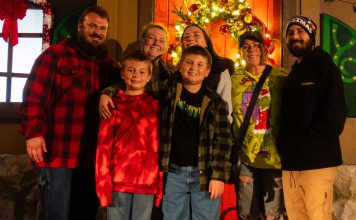A popular San Jose landmark, a destination for thousands of
tourists and students on field trips, is currently celebrating its
75th anniversary after an extensive reconstruction.
A popular San Jose landmark, a destination for thousands of tourists and students on field trips, is currently celebrating its 75th anniversary after an extensive reconstruction.
Rosicrucian Park (in San Jose’s Rose Garden District on Park Avenue between Naglee and Randol) is best known for its Egyptian Museum. Built in 1927 and enlarged in 1966, this replica of the Temple of Amon at Karnak houses the largest collection of Egyptian artifacts on the West Coast.
More recent construction makes the park a delight for local residents to visit. The Moorish-style planetarium, originally built in 1936, has reopened for educational astronomical shows. And a beautiful Peace Garden now welcomes visitors to see what an 18th Dynasty nobleman’s courtyard looked like. Pools, Middle Eastern architecture and a variety of exotic plants make the garden an oasis of serenity.
In addition to the permanent exhibits, there are many guest speakers and educational programs available to the public. Currently a special exhibit features a digital visualization of one of the ancient mummies called “Sherit.”
The organization which owns and operates this facility is the Ancient Mystical Order Rosae Crucis (AMORC). “Crucis,” the Latin word for cross, is not in any way related to Christianity: it stands for the experiences and challenges of life. “Rose” refers to a red rose centered upon a cross in the group’s logo, symbolizing the spiritual unfolding of human beings.
Rosicrucianism has its roots in the mystery traditions, philosophy and myths of Ancient Egypt. The society was probably founded in Europe during the Middle Ages. Two books written in 1614 and 1615 describe the initiation into Egyptian mysteries of a person named Christian Rosenkrenz. They establish the scientific and occult methods and purposes of the Order still in effect today.
Many famous people have been connected with Rosicrucianism, such as Sir Francis Bacon, Isaac Newton, Michael Faraday and Benjamin Franklin, to name just a few.
The first Rosicrucian society in the United States was founded in Pennsylvania in 1694. AMORC was founded in San Jose in 1909 by H. Spencer Lewis. Today, 65,000 members live in 100 different countries with chapters in 450 cities; 1,800 live in the Bay Area. To reach this diverse membership, teachings are published in 13 languages.
The purpose of Rosicrucian teachings is to learn how to find answers to life’s questions within oneself by use of proper techniques. People learn to understand life through mystical experiences.
Rosicrucianism is nonsectarian, and members come from nearly every religious denomination. Many are said to have found, through these teachings, a greater appreciation of their own religious beliefs. To learn more about this ancient wisdom for the modern world, check the Internet at www.rosicrucian.org; for museum information call (408) 947-3600.
Chuck Flagg teaches English at Mt. Madonna High School. Write to him at P.O. Box 22365, Gilroy, Calif. 95021.












